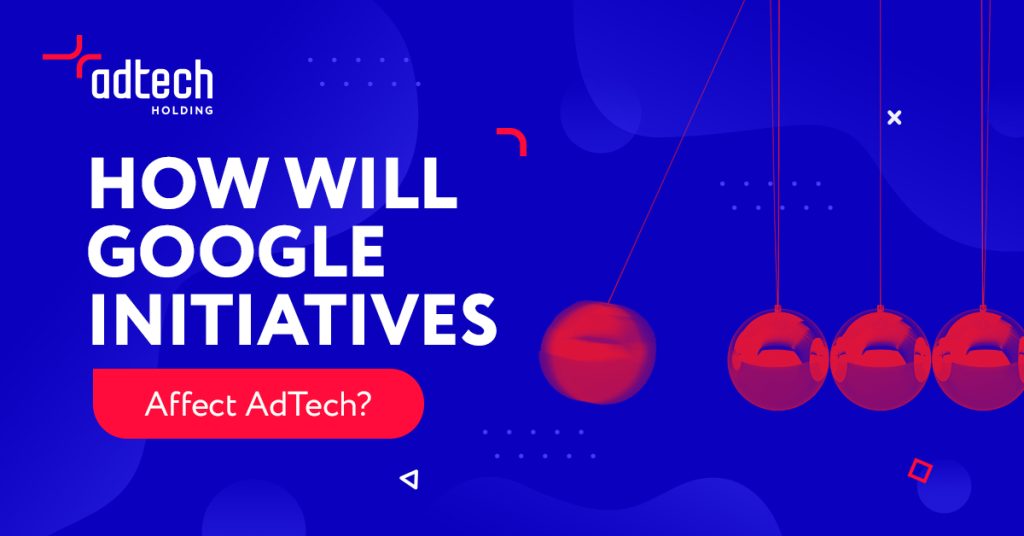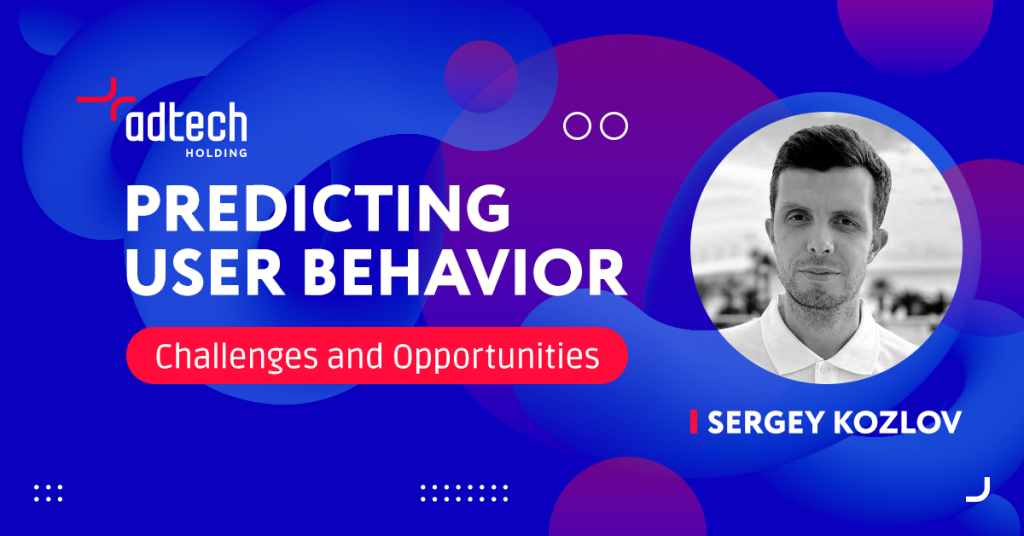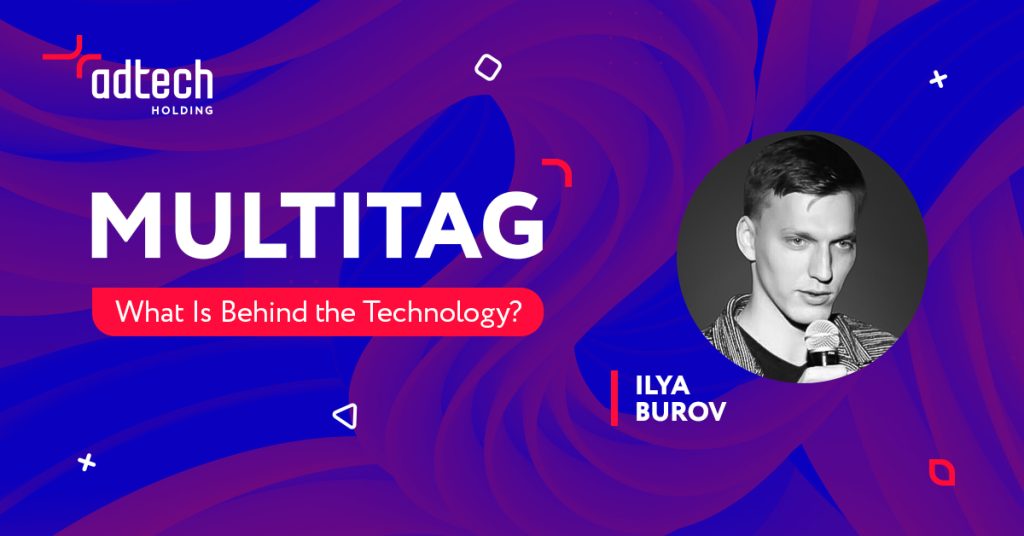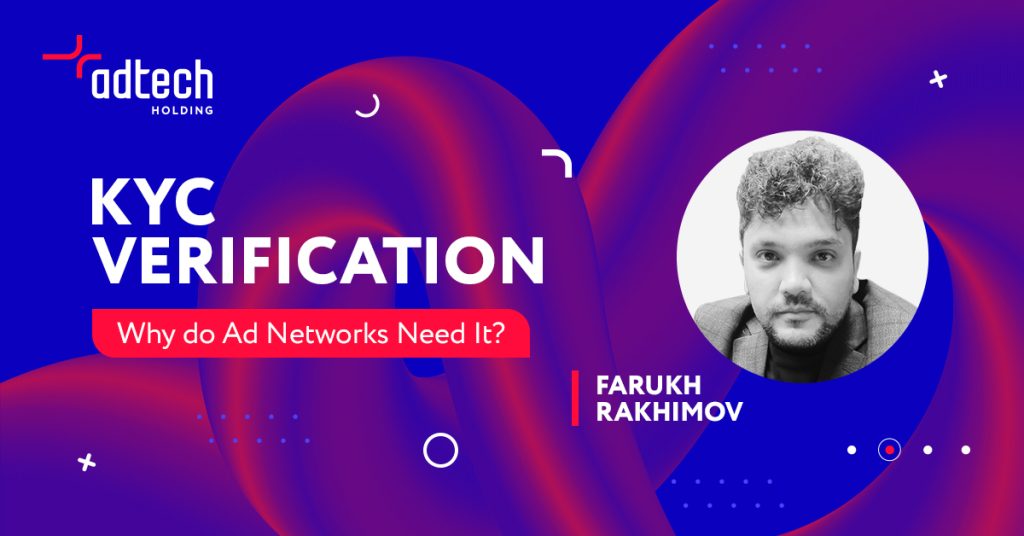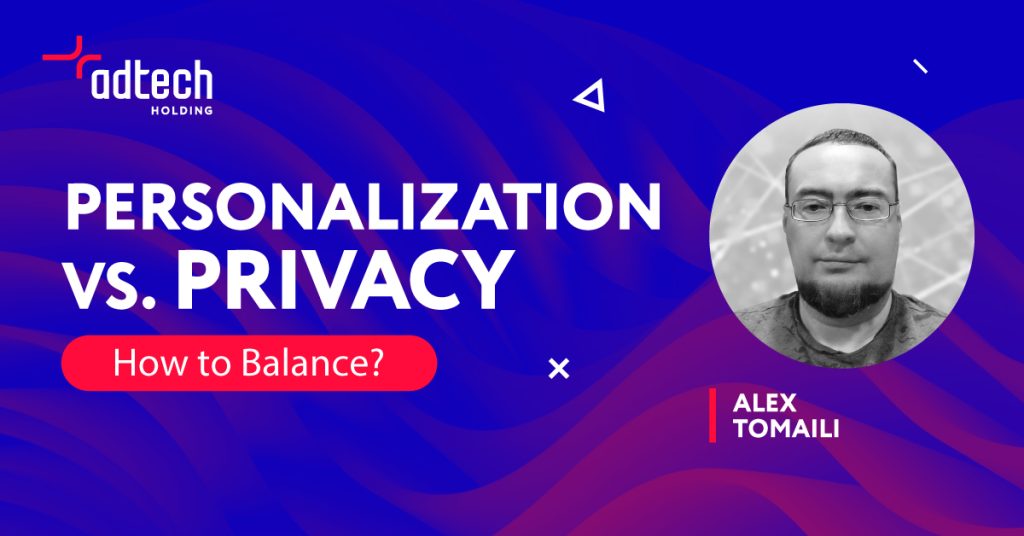Artificial Intelligence in AdTech: Trends and Predictions
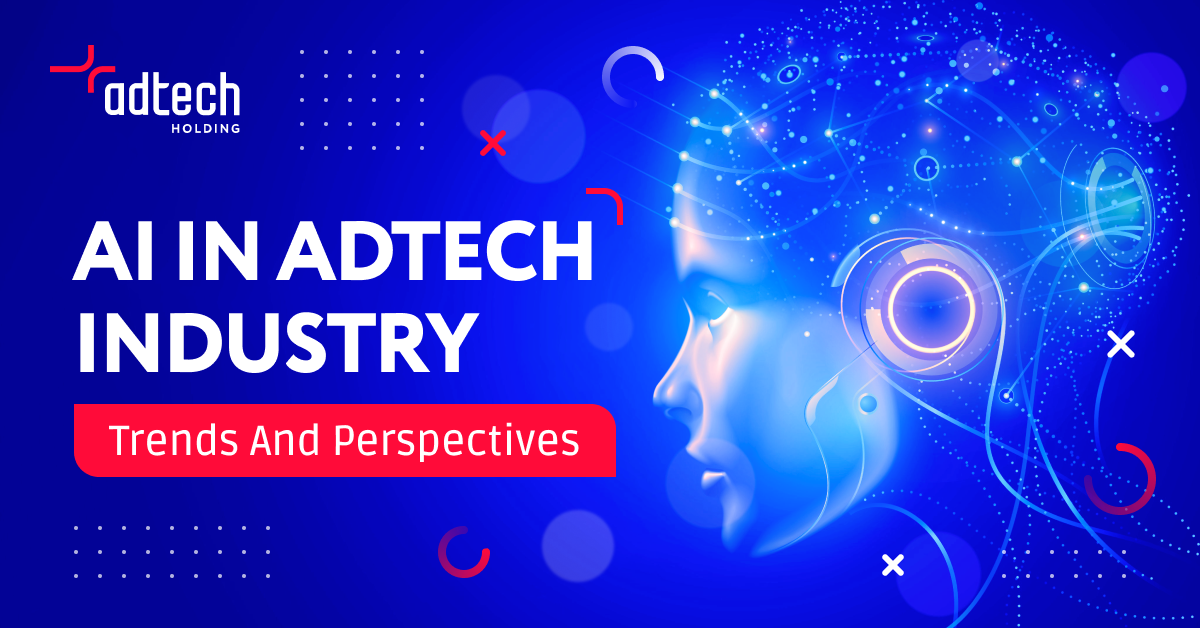
The latest hype around novel AI technologies has created an image that the new era of automation has begun. ChatGPT, Midjourney, and other content-generating services have emerged with tons of speculations on the future of marketing-related jobs and workflows.
However, in fact, artificial intelligence is not entirely about generating new content and automating routine workflows that are currently being successfully done by humans. When discussing AdTech, we also imply so-called predictive AI technologies, able to proceed with large amounts of analytical data. This has been around already for years and allows programmatic advertising to exist and develop in the way we see it today.
In this article, we will consider AI-based technologies used in AdTech today and, with the help of Sergey Ivanov, Product Owner of R&A Group, try to assume how AI might transform the industry in the nearest future.
Generative AI in AdTech
As the name suggests, generative AI produces various sorts of content — from simple marketing posts, translations, and company logos to video scripts and personalized creatives for ad campaigns. Despite a range of concerns regarding data privacy and intellectual property, generative AI technologies are building momentum and gaining high popularity among digital marketers.
Chat Bots
With ChatGPT ahead of the game, the technology of Natural Language Processing is being introduced by more and more big industry players. Google’s Bard AI and Microsoft’s Bing AI are the biggest ChatGPT analogs — and these are just a few of plenty of similar bots available on the market.
The bot’s workflow is simple: it works with the text requests, generating text-based outputs that imitate a dialogue with a real human. How can this be used in digital marketing, though? Here are some top popular practices:
- Keywords generation. Chatbot services are able to create a semantic core — a set of relevant keywords for an ad campaign. Here is one example:
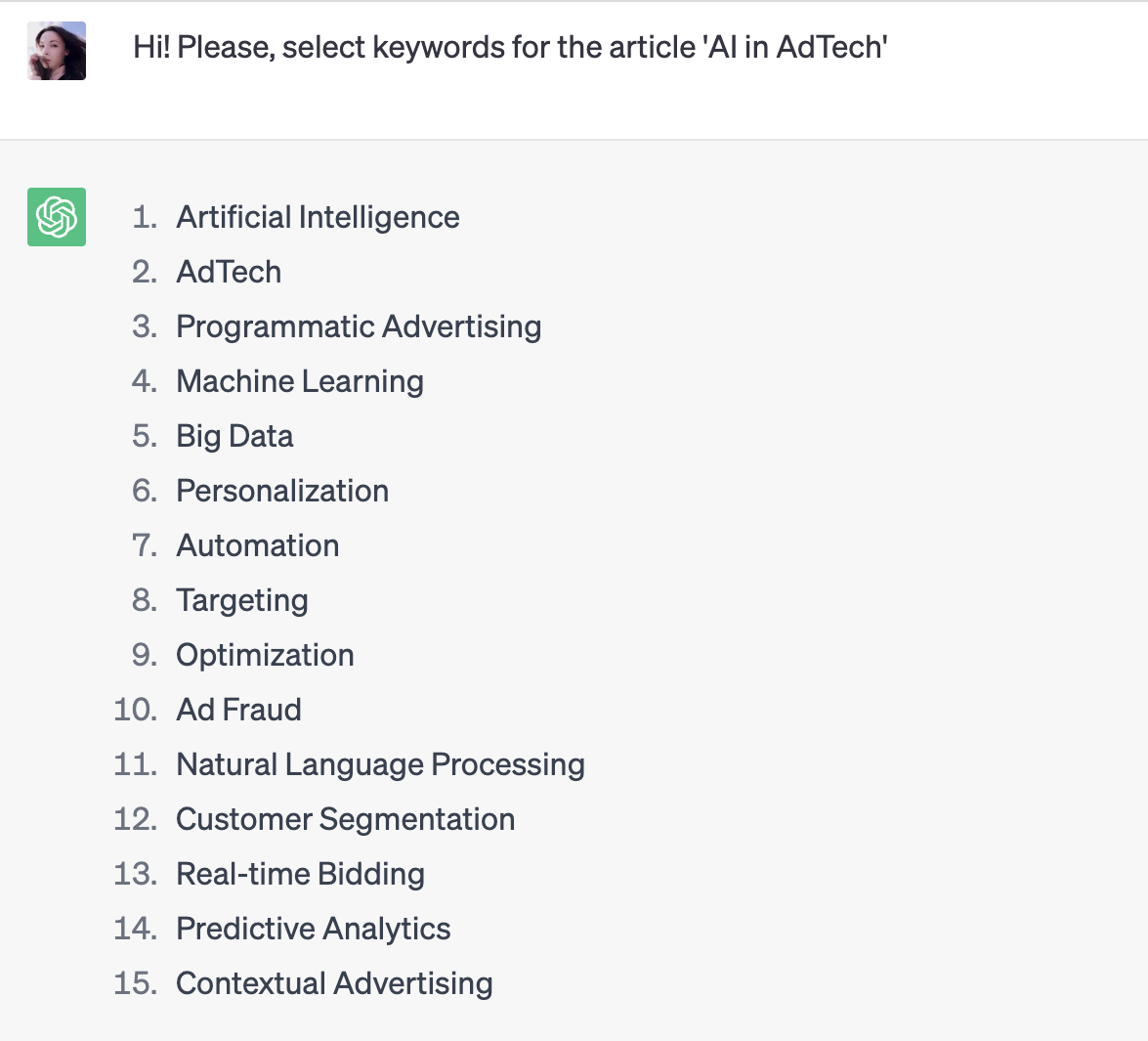
- Copywriting: slogans, CTAs, titles for creatives. According to Statista, this is one of the top popular tasks requested by ChatGPT.
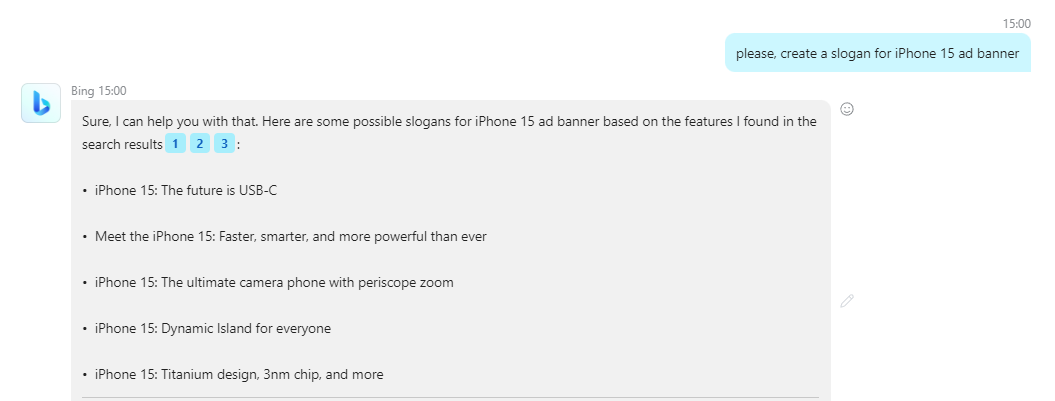
- Translation. A time-efficient feature for advertisers when they need to adjust their creatives to various GEOs:

- Ad placement. When chatbots can clearly see users’ intent to make a purchase, they can show ad links. For example, here is how it happens at Bing AI: all ads are marked with the $ sign.

Text-To-Image Services
Text-To-Image bots create visuals by description a user inputs to the chat or redesign existing images. Such services store a huge database of reference pictures, styles, and designs and can quickly deliver logotypes, banner creatives, and prototypes. Some examples of text-to-image bots are Imagine.AI, Midjorney, Lensa, and AdCreative.
Here are some examples of how it can be used in the AdTech industry:
- Make quick resize for various platforms
- Analyze data about the ad creatives with the highest performance and generate creatives with high CR
- Adjust an image to a particular style
Predictive AI in AdTech
This AI type allows people to operate with big volumes of data and make certain predictions based on machine learning. One of the simplest examples is recommendation engines that we come across on video content platforms like TikTok, Netflix, or YouTube:
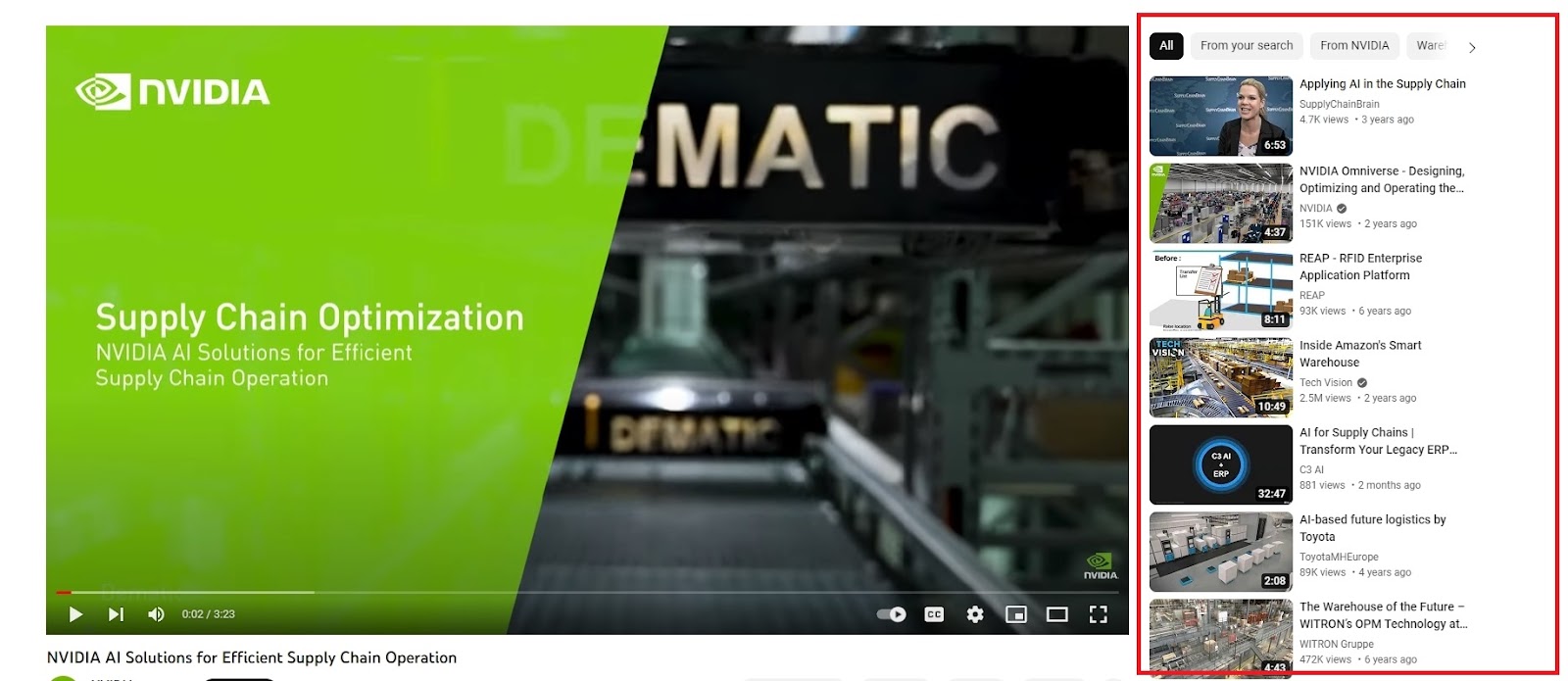
While it is still doubtful that content generators will be able to replace the human creative mind in the near future, predictive AI systems have already enabled workflows that were not available through manual labor.
Processing huge numbers of requests within milliseconds is the ability of predictive AI that makes it irreplaceable for modern AdTech projects, including ad networks and traffic monetization platforms.
Let’s take a deeper look at how predictive algoritms work for AdTech companies and consider some precise examples from the AdTech Holding practices that Sergey Ivanov shared with us.
Recommendation Engines
The main task of programmatic advertising is to enable smooth ads rotation and ensure relevant ad placement for every advertiser. This involves constantly monitoring and processing large amounts of data — including information on bids for every traffic slice, user requests, bot and fraud traffic, highly and poorly performing zones, and more.
In the end, the system must recognize how efficient will the ad placement be and how much it is worth. What is more, it should be done quickly, which is also a non-trivial task: publishers generate enormous traffic volumes with hundreds of millions of users, and there are thousands of ad campaigns.
The problem is solved with exactly recommendation engines that use AI components. This AI system consists of several parts:
- Intellectual Systems. These systems understand how to test an advertising campaign and find placements where it is capable of showing the best performance. The path from a campaign launch to the moment it finds the optimal traffic source is very short — thanks to AI efforts.
Besides, these systems optimize already existing campaigns: for example, find and cut traffic slices with poor performance.
- Smart Formats. If we take the PropellerAds multisource platform as an example, we can witness how AI is used for optimizing costs for advertisers and making campaign launches almost automated.
For example, there is a CPA Goal format. In a nutshell, it works like this: a client pays per click while the system strives to optimize this cost as per conversion. This process requires a very accurate estimation of campaign performance and the actual traffic price — to match every request with the right campaign. This estimation is done with the help of AI — there are approximately 50 constantly updated models.
Sergey Ivanov: the main point of using AI for recommendation engines is to enable quick and smooth processes for publishers and advertisers and facilitate the overall workflow for both parties of programmatic advertising.
AI Anti-Fraud Systems
Ad fraud has become a much bigger problem today than it was even several years ago. Now, the scam techniques are not limited to bot farms and fake traffic — but involve a number of complicated technologies that can imitate app installs, steal sensitive data, and overall mimic human behavior in a very realistic way.
Pretty obviously, combating ad fraud does not seem possible anymore without AI’s capabilities of processing massive amounts of triggers and detecting bots.
Sergey Ivanov: One of AdTech Holding’s projects, ADEX, is the AI system designed specifically for recognizing and stopping bot and fraud traffic in ad campaigns in real-time mode. Its algorithms are constantly learning and adjusting to novel signals of fraud.
Speculations on Artificial Intelligence in the Future
Although the appearance of ChatGPT and other content-generative AI systems are often considered almost revolutionary, their opportunities are still limited. Is there anything more to expect?
Sergey shared his view on the perspectives of AI in the AdTech industry and innovations that have a big chance to get involved in the workflows in the nearest future.
Sergey Ivanov: Speaking about predictive AI, I suppose that there will be further development in bidding strategies that we already use. For example, PropellerAds is constantly adding new traffic sources — and this implies a much bigger bidding landscape with an enormous number of requests. Thus, there is an obvious need to enhance further real-time bidding technologies — for quicker and more accurate ad placement predictions.
Generative AI in AdTech will definitely involve new opportunities for personalized creatives that can be done almost effortlessly. For example, there is a styling technology that can change a creative’s landscape keeping its main message. It can be, say, a quick automatic redesign of a banner made to fit the brand palette of a particular website.
Summary
AI’s potential is obvious, and it has already transformed the industry of programmatic advertising. However, while predictive AI has become irreplaceable for media buying processes, generative services might most likely remain an auxiliary tool for a while, with a human creative mind at the top of the flow.
